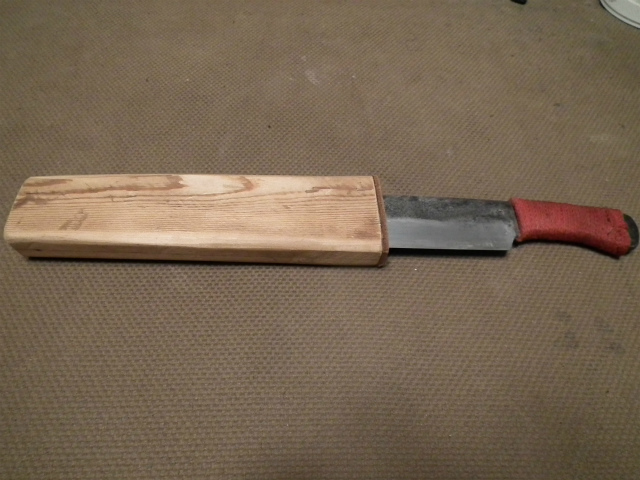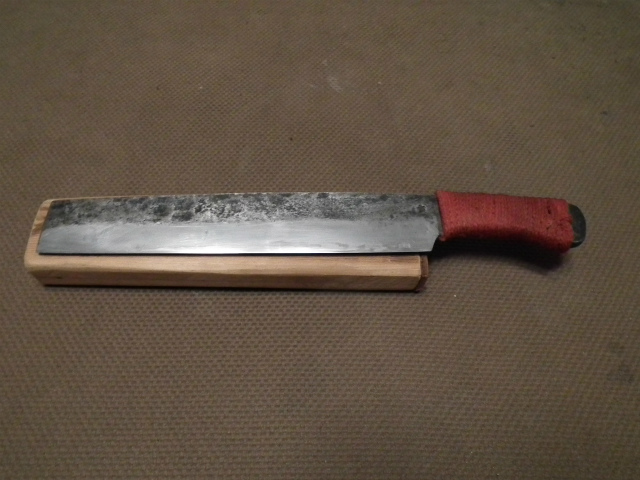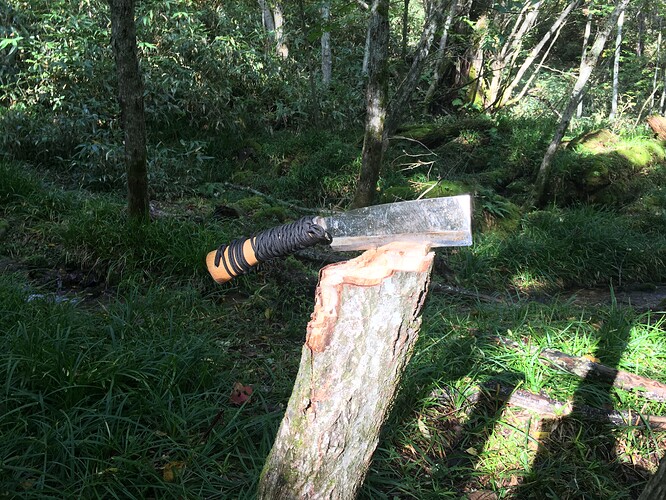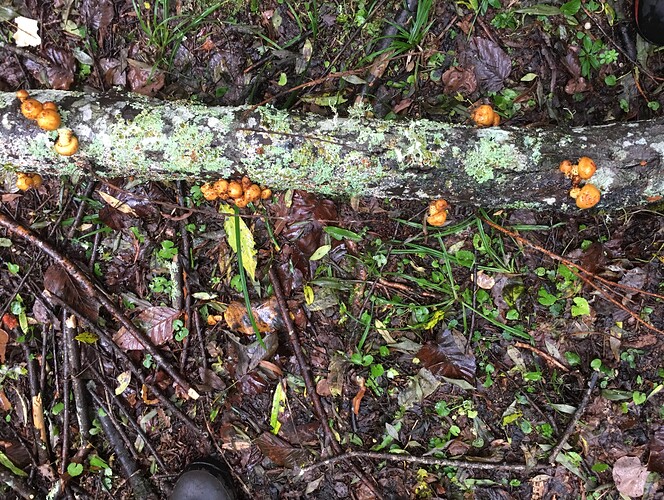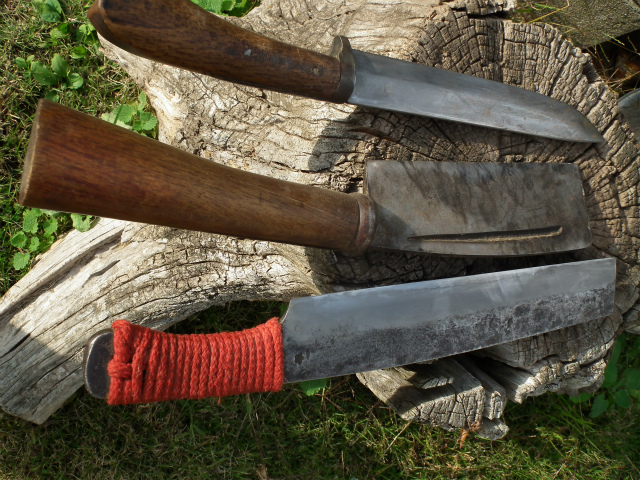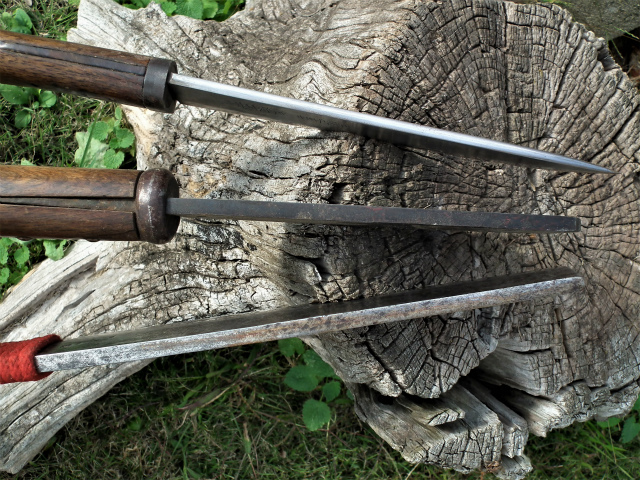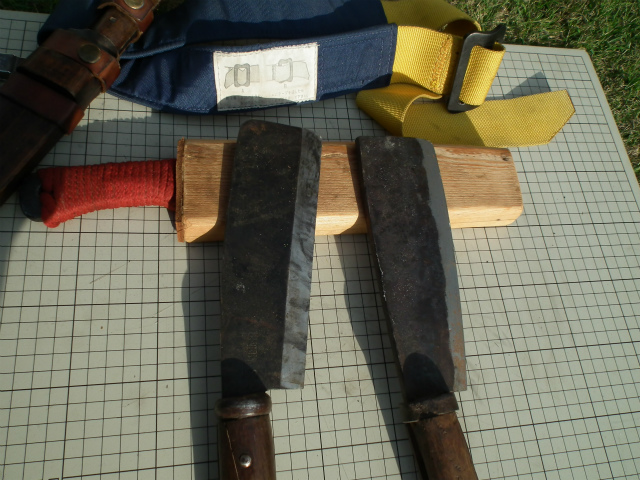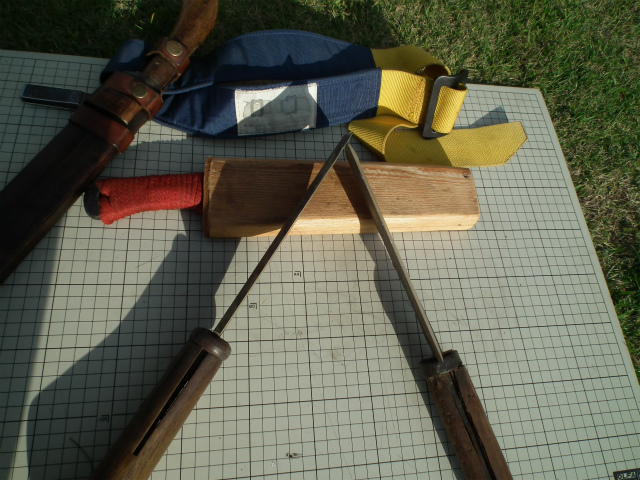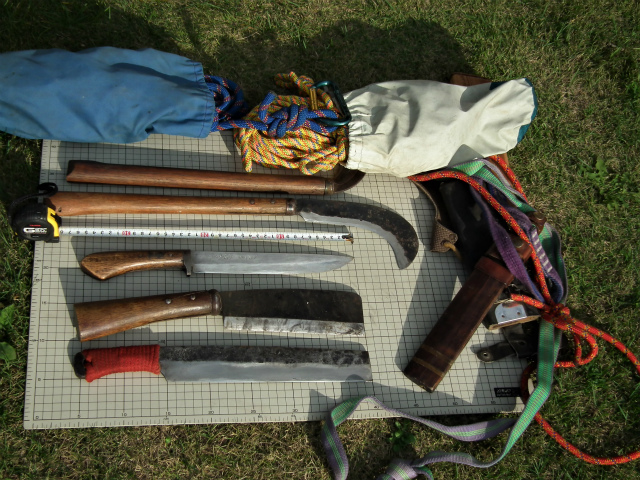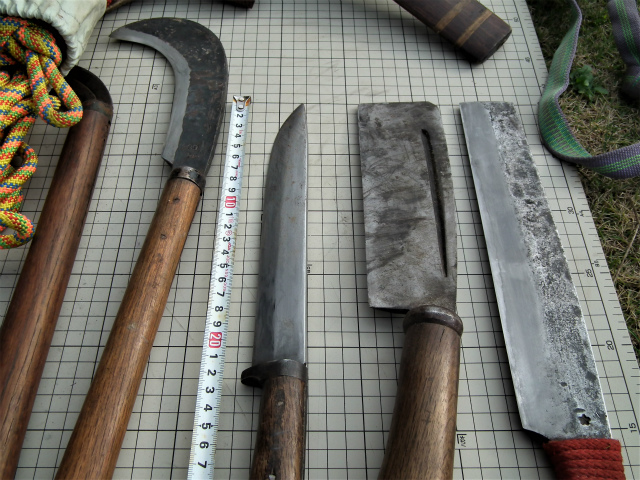Isaac, fun story, good looking nata, Single bevel I think.
Most chopping duties in recent years has been done with a khukuri (aka kukri , kukuri) made in India, a gift given to me 12 years or so back from a friend since we were in the Navy together. I don’t think it was an Uncle Bill khukuri (who I think was the guy behind Himalayan-imports.) But I’ve lost the paperwork that came with it.
Interesting knives - the sheath also holds what at first glance looks like two small knives with short wood handles. But only one is a knife with about a 3 inch blade. The other is actually a hardened steel used to sharpen the edge. I think most people think of kukuri knives as warrior weapons used by the Gurkha soldiers. But they were mostly a farmers tool. The farmer’s khukuri is a different design from the Gurkha khukri.
Since discovering the Junglecraft blog, [ junglecrafty channel on youtube] maybe five years ago I have found the Malayian parang an interesting machete / nata like chopper. They are crudely made, yet they are also a highly evolved design for jungle work. Which is why I have resisted ordering one, perhaps too refined for jungle work. Not for the tasks I would have to do, but maybe not.
There are many different designs to better match different tasks. Some long or straight edged, others with blades only about 11 inches long with a slight radius to the cutting edge. Which I think makes a better cutting edge.
They are not refined in the way a Japanese nata is. Super hard steels like blue paper steel or a well crafted finish. Where I see the refinement in the Malay parang is in how it has evolved to fulfill its designed purpose, as the guy at Junglecraft explains in some of this videos, they have some design features that at first glance seems crude, but with more familiarity using them there appears to be a reason why the native Malaysians prefer rat-tail tangs that are not pinned into the handle, and why they find a good adhesive to use to hold the tang into the handle are small bits of plastic shopping bag stuffed into the tang slot and melted by first heating the tang before inserting it. He has 8 or so videos just on parangs, and several of his other videos shows them being used for different tasks.
Here are a few of his videos.
The first one is Parang cutting techniques. I think a nata could largely be used the same way. Depending on the design of the nata.
How to repair a parang in the field - where in he explains how to his surprise some design / construction features that at first seemed inferior may in fact have a practical purpose. Clearly not fancy made tools just practical tool for use in dense jungle. (he has other videos about how easy it is to become lost in the jungle after only traveling a short distance in, a few people lose their lives there each year because they become lost even when traveling with a group. Sometimes their bodies are found, sometimes never found. A tool you can easily sharpen or repair would be important)
Parang review 2016 - made two years after the first video, wherein he states the parang he repaired by gluing it with melted plastic bag has worked fine without need of repairing the handle.
I believe he said he could replace a small parang for $7 in Malaysia, but authentic Malay style models are more expensive and difficult find here.
Condor Tool & Knife makes one called the ECO Parang. That appears very similar to one of the small light models he preferred to use. About $40 on Amazon. Gets good ratings, There are several review videos on youtube, just search YT for " Condor ECO parang". Some people call the Condor eco parang a machete, which it kind of is. But Condor also makes a model called the “parang machete”, that is a different tool with a longer blade.
Point is if you like a machete you might also like a parang more than a nata. 
![]()


